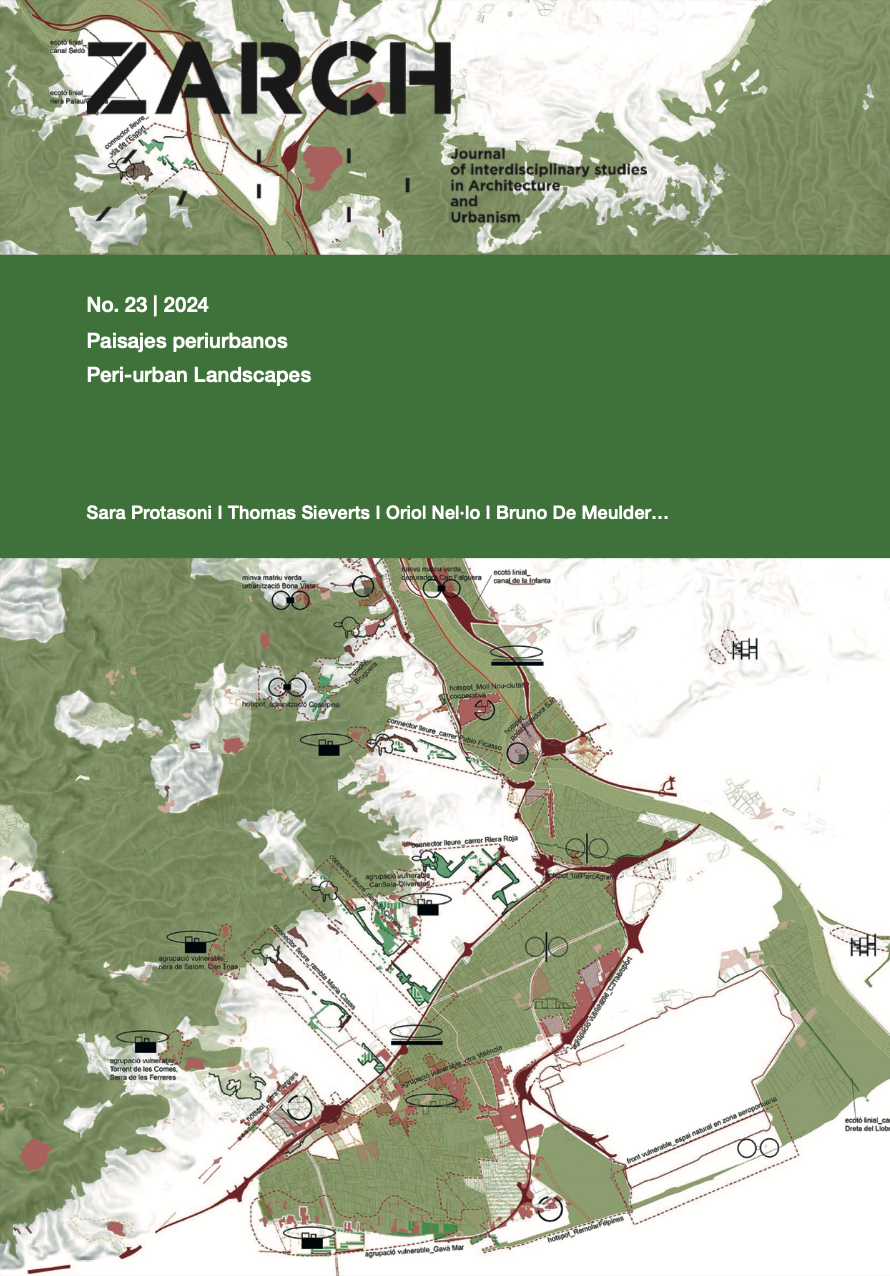Peri-urban landscapes
DOI:
https://doi.org/10.26754/ojs_zarch/zarch.20242311122Keywords:
Peri-urban landscapes, urbanised landscapes, periurban explosion, eco-cultural values, urban processesAbstract
Although peripheries have been shaped through the interaction between humans and nature, presently, due to the new processes of urban growth, the natural and agricultural spaces surrounding them are being shaped as a palimpsest, a collage of often fragmented, dispersed, empty, or residual spaces with mixed uses. These are not mere visual scenarios, but the manifestation of processes that shape the territory and territorial systems, the so-called peri-urban landscapes analysed by some urban geographers. Issue 23 of ZARCH is devoted to the study and understanding of peri-urban landscapes, with a specific emphasis on their eco-cultural values. It also delves into the importance of those landscapes that, due to their natural, agricultural, or other man-made features, could play a pivotal role in urban and landscape regeneration processes. The aim of this integrative approach is to recognise the complexity of these spaces and their potential, not only to preserve valuable elements from the past, but also to actively contribute to the future development of urbanised landscapes.
Downloads
References
Council of Europe. Spatial Development Glossary (CEMAT). Estrasburgo: Council of Europe Publishing, 2007.
Corboz, André. “El territorio como palimpsesto.” En Ángel Martín Ramos (coord.), Lo urbano en 20 autores contemporáneos. Barcelona: Ediciones UPC, 2004.
Dematteis, Giuseppe. “Suburbanización y periurbanización. Ciudades anglosajonas y ciudades latinas.” En Javier Monclús (ed.), La ciudad dispersa. Suburbanización y nuevas periferias. Barcelona: Centre de Cultura Contemporània de Barcelona, 1998.
Kostof, Spiro. The City Shaped. Boston: Thames and Hudson, 1991.
Mumford, Lewis. La ciudad en la historia [The City in History, 1961]. Logroño: Pepitas de Calabaza, 2012.
Roncayolo, Marcel. La ville et ses territoires. París: Gallimard, 1990.
Sieverts, Thomas. Paisajes intermedios. Una interpretación del zwischenstadt [Zwischenstadt, 1995]. Granada: Ediciones del Genal, 2015.
Downloads
Published
How to Cite
Issue
Section
License
Copyright (c) 2024 ZARCH. Journal of interdisciplinary studies in Architecture and Urbanism

This work is licensed under a Creative Commons Attribution-NonCommercial-NoDerivatives 4.0 International License.
Funding data
-
Ministerio de Ciencia e Innovación
Grant numbers PID2020-116893RB-I00





